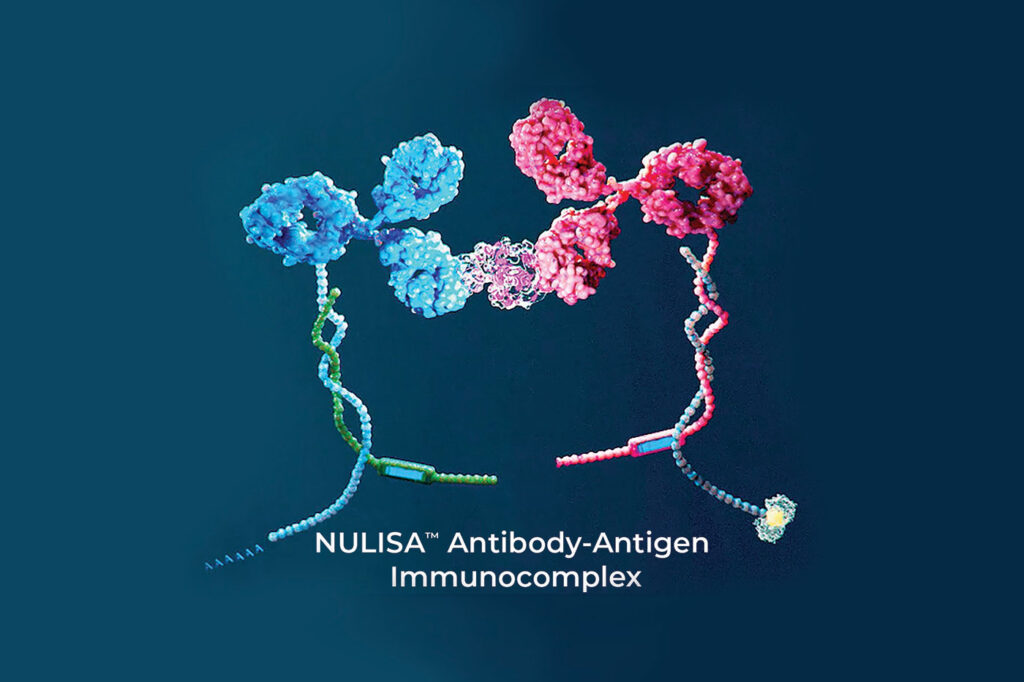Sponsored content brought to you by
The earlier a disease is detected, the earlier treatment can begin. One approach, liquid biopsies, uses readily obtainable blood as the sample. However, many protein biomarkers are only present at low levels in plasma. Now, advances in sensitivity and multi-plex capabilities are opening up new precision proteomics possibilities. GEN spoke to Yuling Luo, PhD, founder, chairman, and CEO at Alamar Biosciences to learn about the company’s groundbreaking protein liquid biopsy technology.

GEN: Many protein measurement technologies are available. What outstanding needs drove Alamar Biosciences to develop a next-generation protein liquid biopsy technology?
Luo: Early detection of cancer has always been my passion, but DNA liquid biopsies still have low sensitivity; only two DNA copies exist in a cell. Yet the cell has millions of copies of proteins.
These abundant biomarkers are specific and widely applicable to many diseases. Just about every indication like cancer, diabetes, autoimmune disease, neurodegeneration, and cardiovascular disease involves changes in proteins. These changes in protein levels or function do not always correlate with mutations in the DNA.
Currently, no protein liquid biopsy technology has demonstrated the needed combination of sensitivity plus multi-plex capabilities. Some companies offer ultra-high sensitivity solutions but are single to low-plex while others provide highly multi-plexed solutions but with lower sensitivity.
We saw a need for a technology that had not only ultra-high sensitivity but that could also evaluate dozens, hundreds, or even thousands of protein biomarkers for proteomics applications in discovery through validation, development, and diagnostics.
GEN: What unique enhancements make your instrument and immunoassays especially designed for precision proteomics?
Luo: Three key components determine assay sensitivity. One is a single-molecule detection capability, the second is a background suppression mechanism, and the third is the affinity and specificity of the antibody binder.
You can increase sensitivity by improving signal or by suppressing the assay background—the signal to noise. Either way works. Everyone else is focused on boosting the signal. Alamar Biosciences is the only company to address background suppression.
Our precision proteomics technology, called NULISA™, not only has a single-molecule detection capability but also suppresses the assay background by 10,000-fold. Leveraging NGS technology to boost specificity further, our system can simultaneously analyze 100s to 1000s of protein targets in a single sample while maintaining an ultra-high level of detection sensitivity.
We use a dual selection proximal ligation technology. The assay purifies the immune complex and removes background to achieve an ultra-
high level of sensitivity. To enable the use of PCR and NGS as the read-out, the antibody detection molecule is conjugated with a nucleic acid.
Another technology we created is Attobody™, an antibody that has as much as a single-digit picomolar affinity. The combination of this antibody with our NULISA™ technology provides the ultimate level of sensitivity. For the majority of targets, commercially available antibodies can be used, but for some early detection applications, you need very high sensitivity and a super high-affinity Attobody.
GEN: What protein biomarkers and proteomic analyses does Alamar Biosciences focus on?
Luo: We are initially focusing on protein biomarkers that require ultra-high sensitivity and multi-plex capabilities for detection. Inflammation is involved in almost every disease, so the first panels contain mostly cytokines/chemokines. Many are in very low abundance in plasma.
The second focus is a neurology panel for biomarkers such as phospho-tau and amyloid-beta peptides that are very important in many neurological diseases, including Alzheimer’s. They are also at low levels in the blood and not reliably detected by other proteomics technologies.
GEN: How can the scientific community access your proteomics technology?
Luo: Currently, we have a technology access program. Researchers send us their samples, and we run the assays. In the second half of 2023, we will implement an early access program for the instrument and initial panels.

Learn more AlamarBio.com

